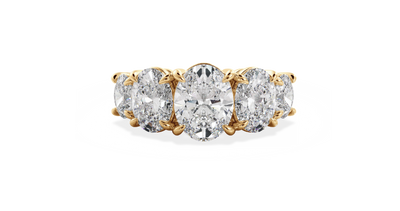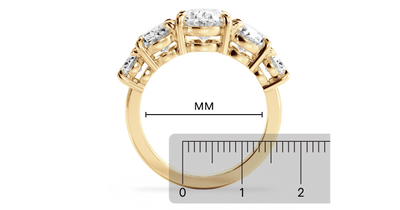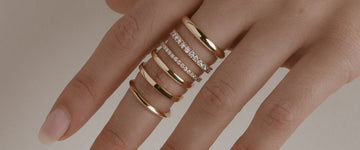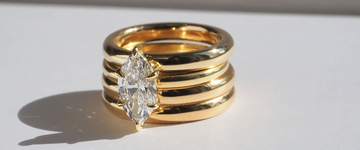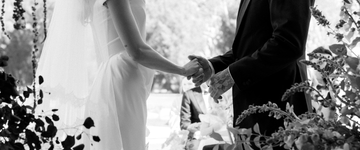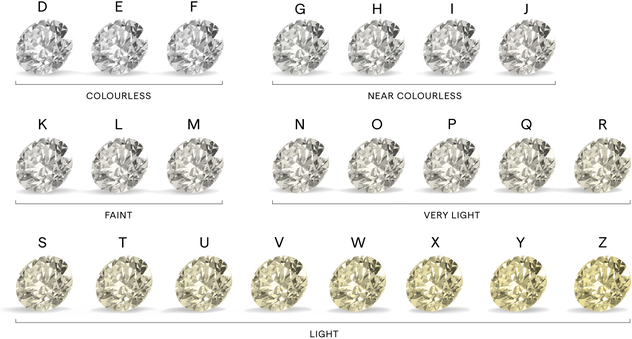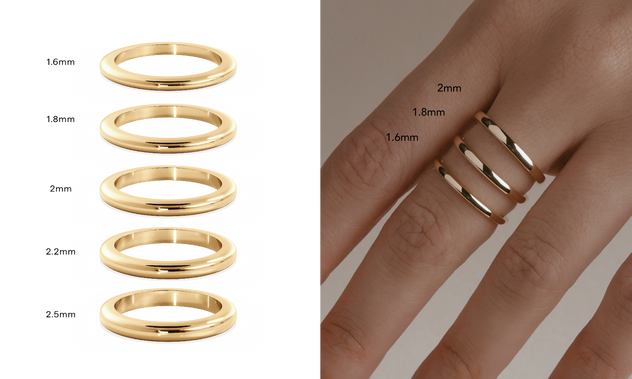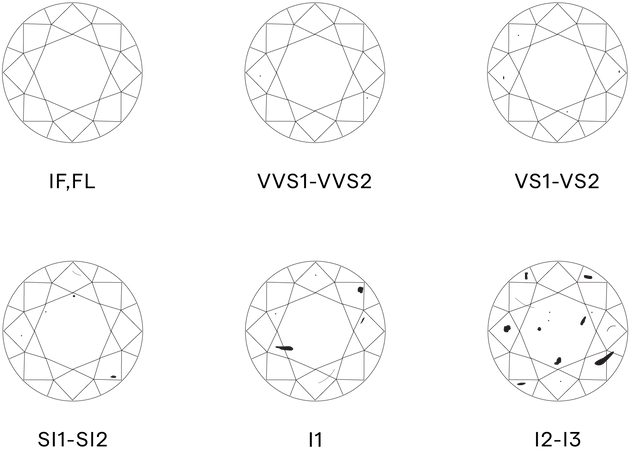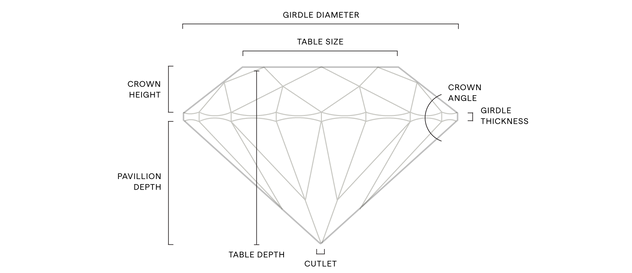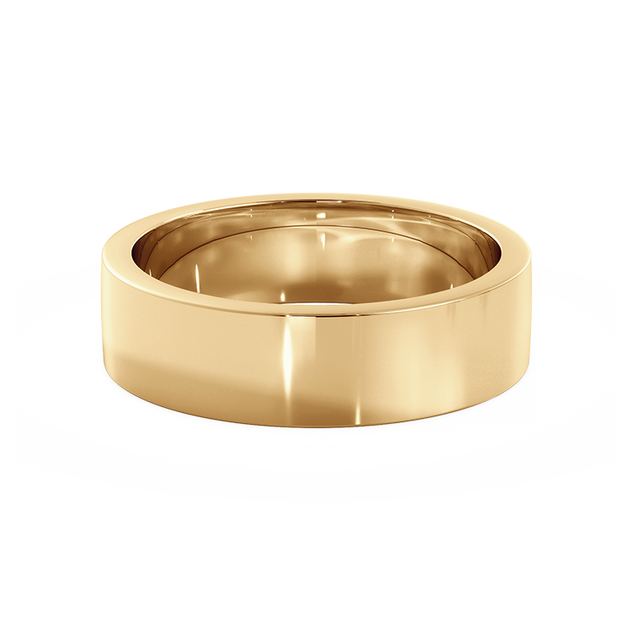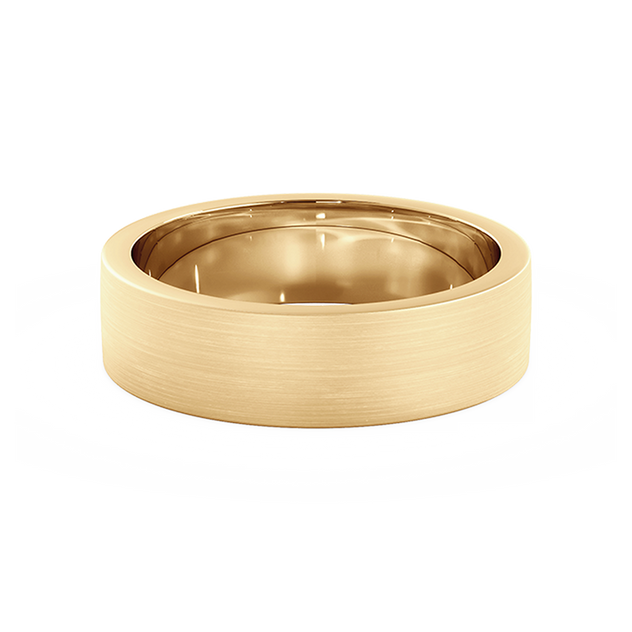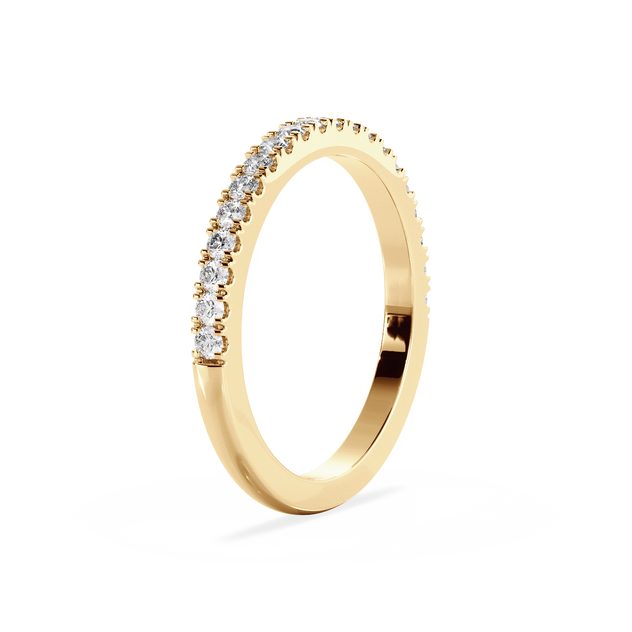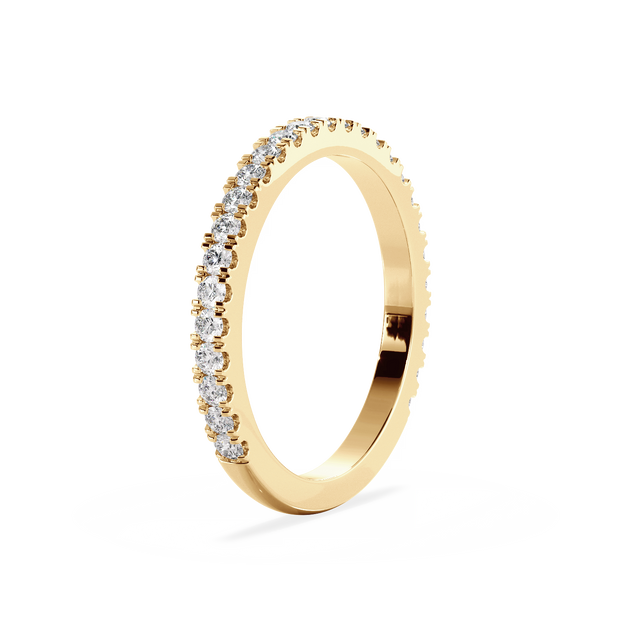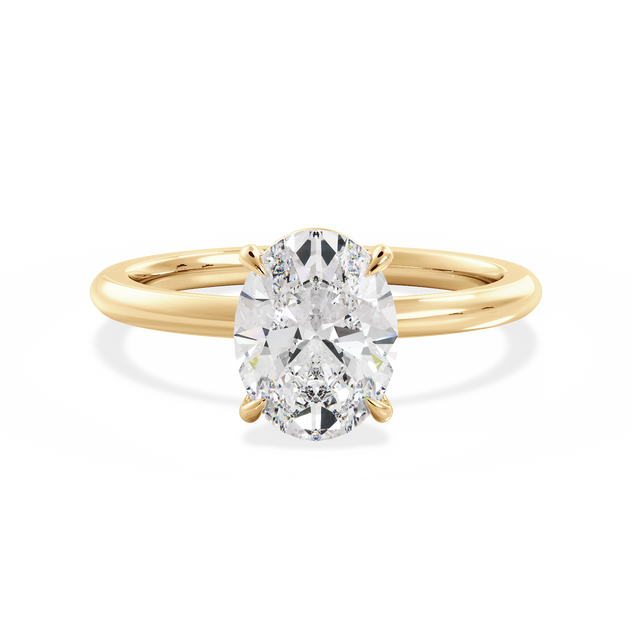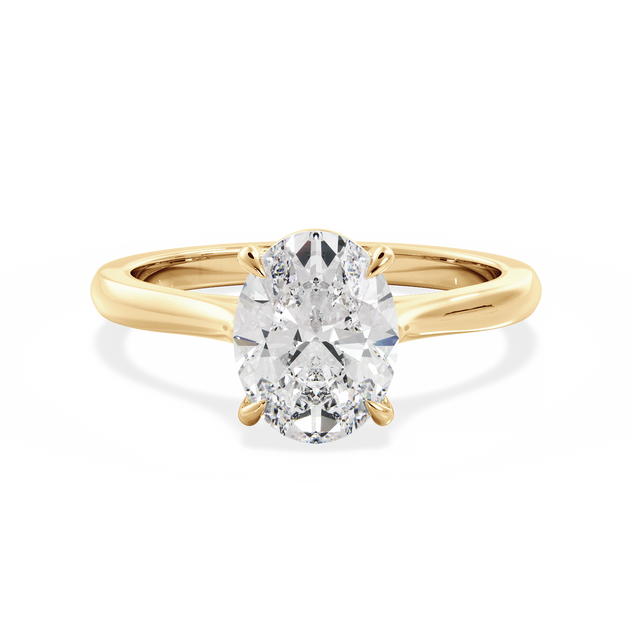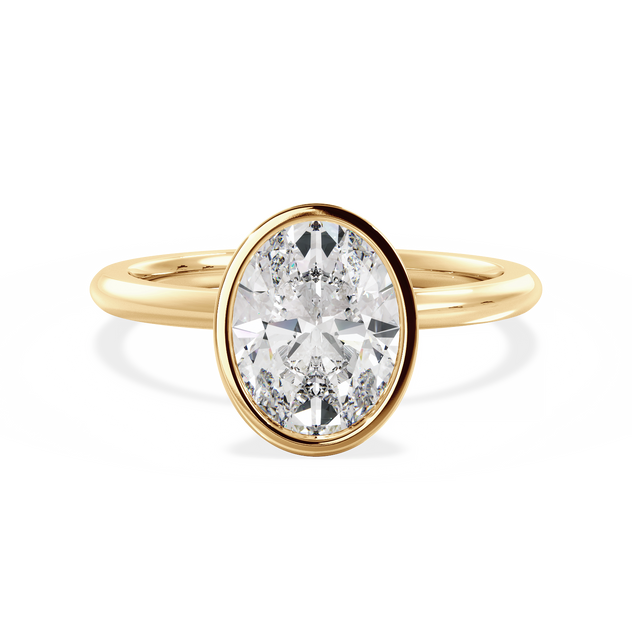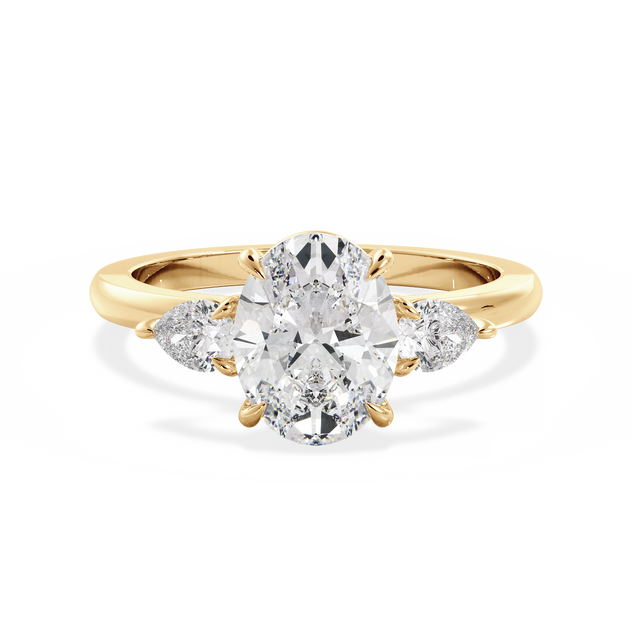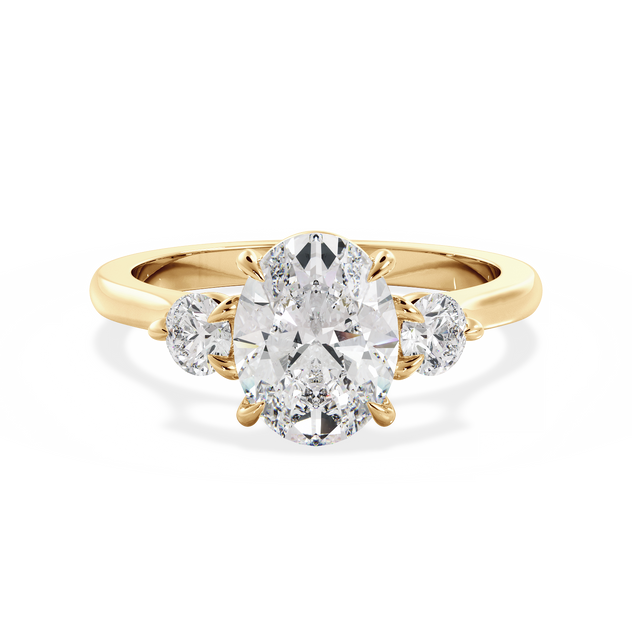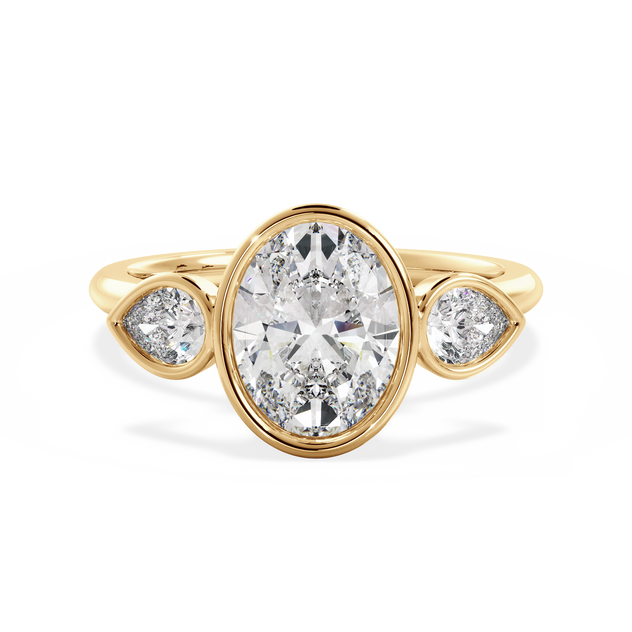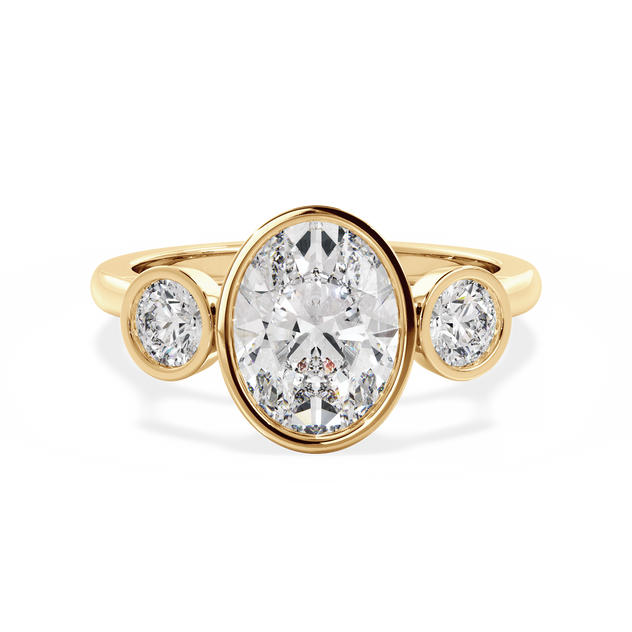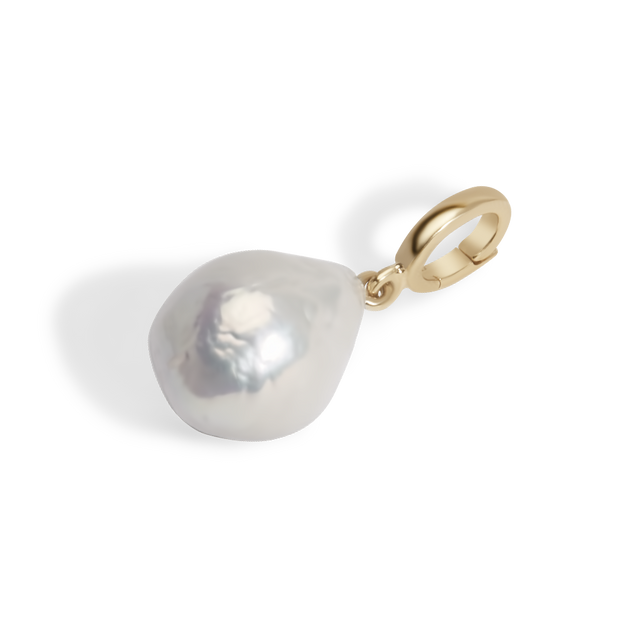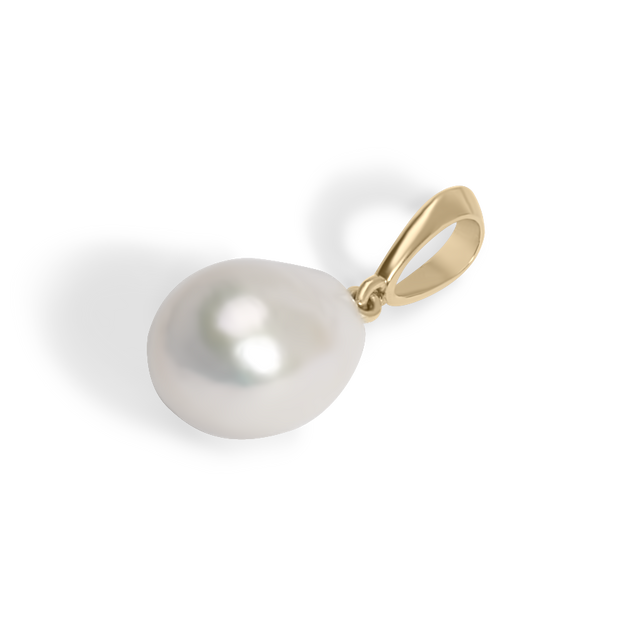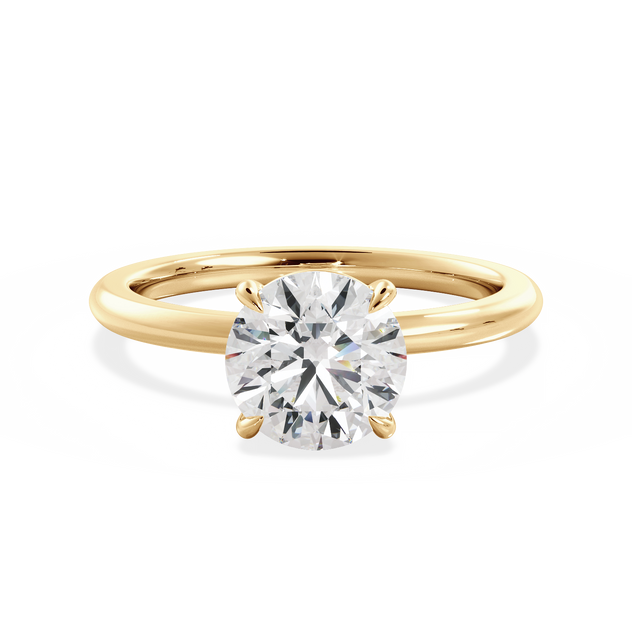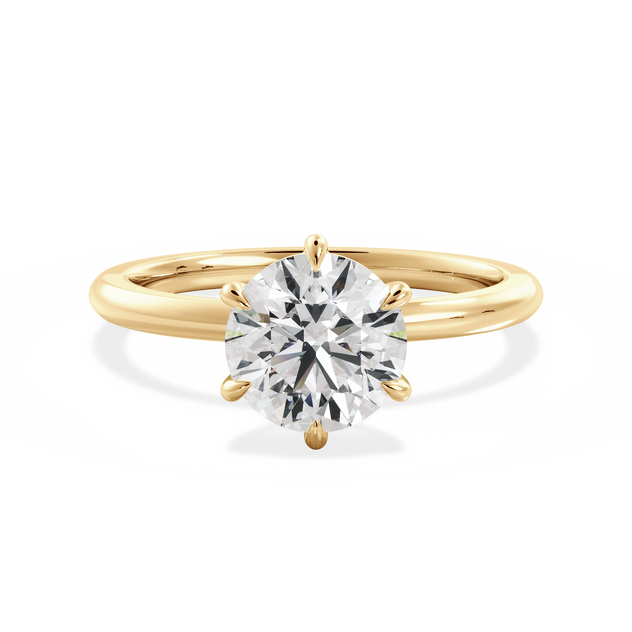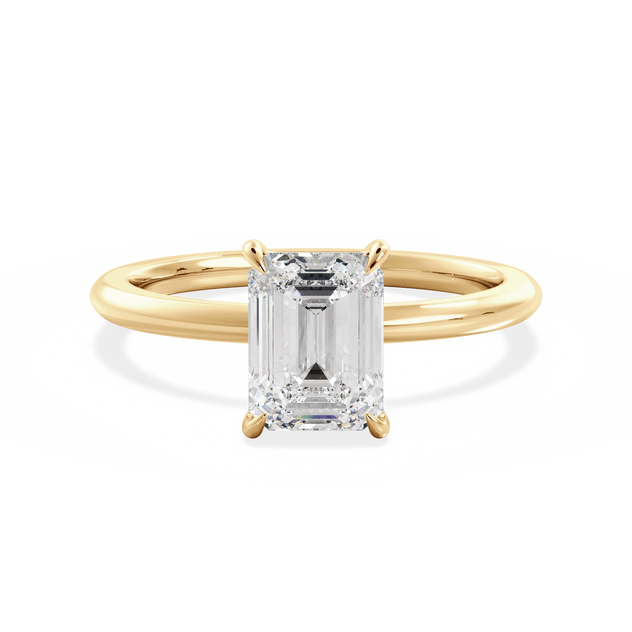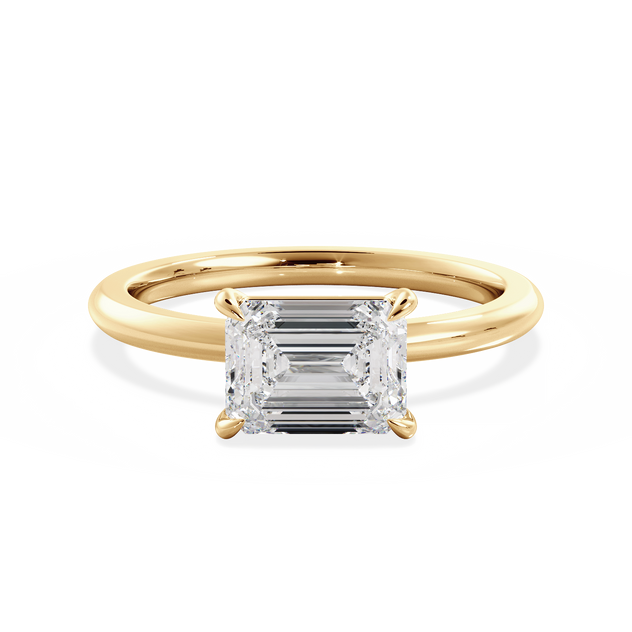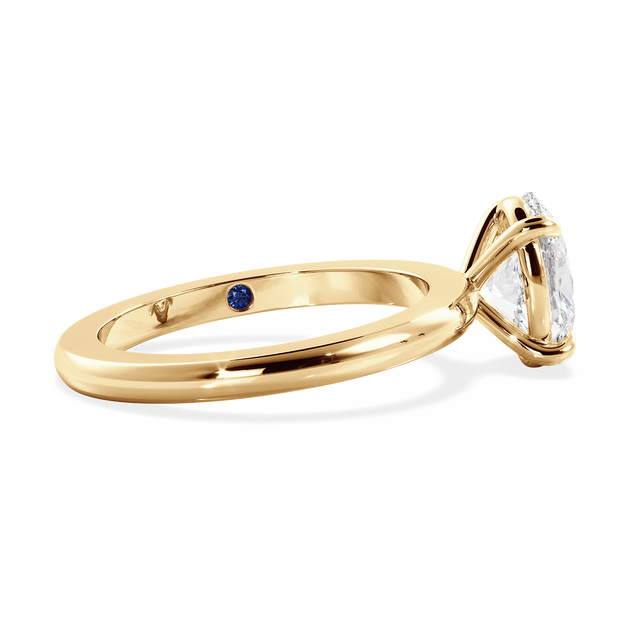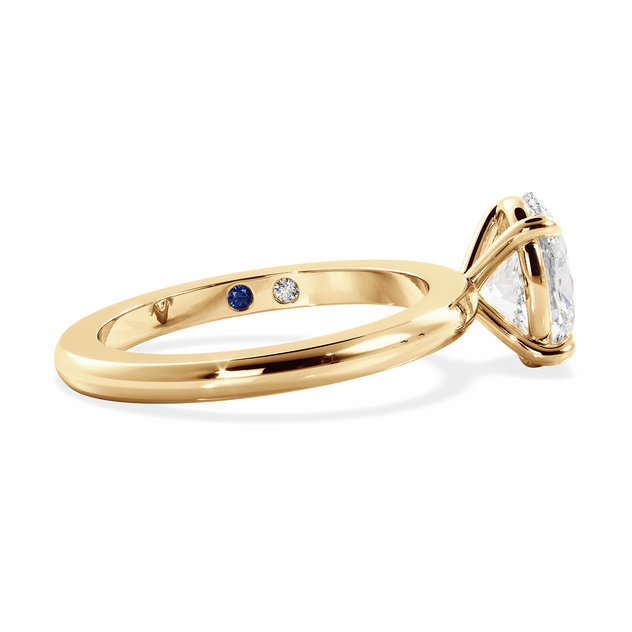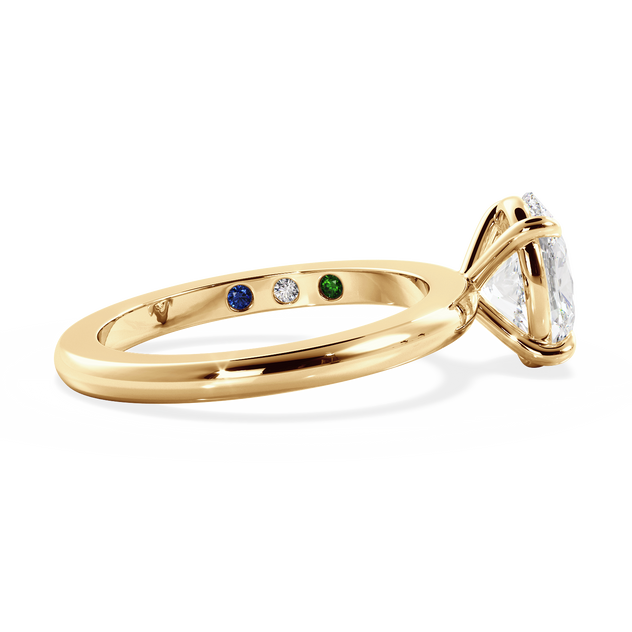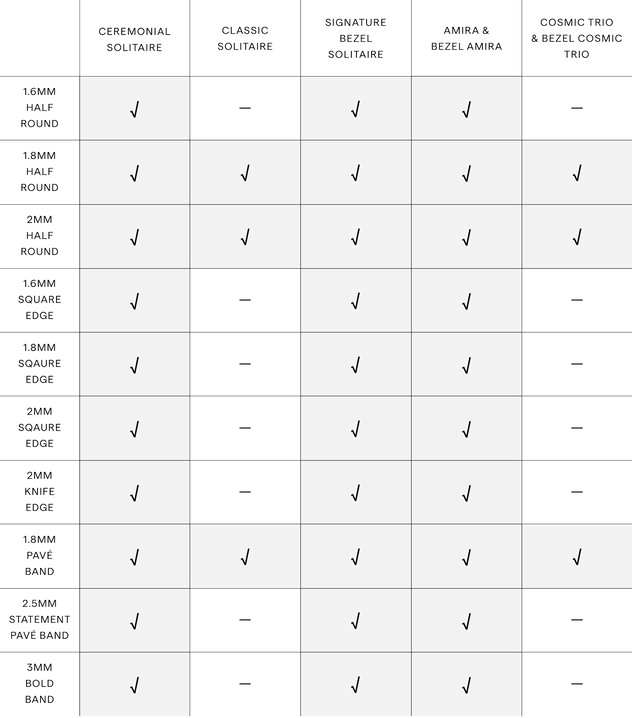Use an existing ring that fits on the ring finger
Combining the unique aspects of round and marquise shaped diamonds, pear cut diamonds are a classic shape best suited for timeless and sentimental designs. Read on to explore the varying elements that contribute to each individual pear shaped diamond.
Ratio
The ratio of any diamond is found by dividing the length of the diamond by the width. A lower ratio equates to a wider, plumper pear, and a higher ratio refers to a narrower, elongated shape.
While a ratio between 1.5-1.7 is considered ideal for pear cut diamonds, personal preference plays a significant role. Keep in mind that diamonds with a ratio outside of this range are considered less desirable and therefore may have lower cut gradings. In saying this, we truly believe beauty remains in the eye of the beholder and that whatever your preference should be prioritised.
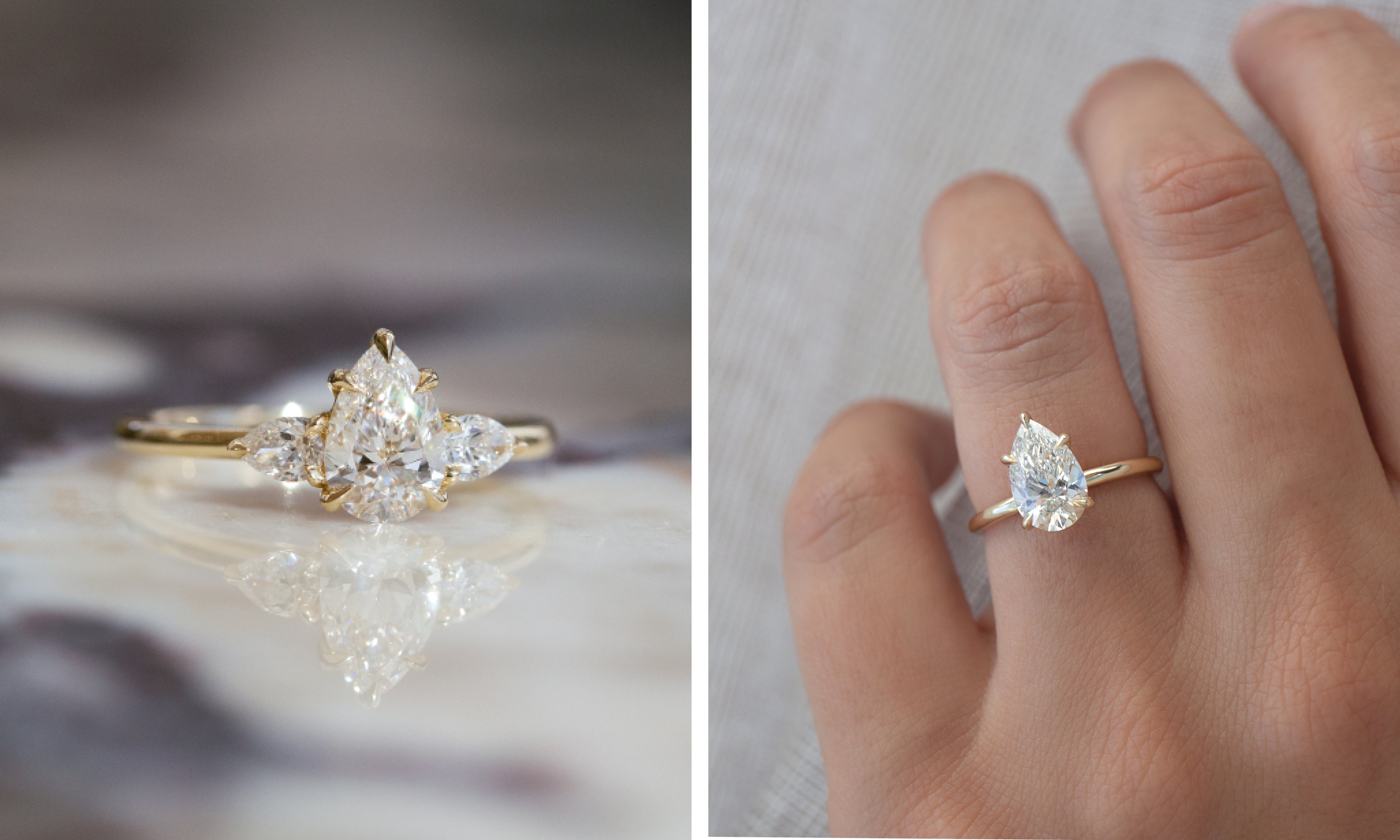
Above: A 0.80ct Pear Amira (left) and a 1.73ct Pear Ceremonial Solitaire (right)
Cut
When considering the quality of a pear shaped diamond, the best place to start is with the symmetry. While all symmetry gradings are included in the diamond certificate, the best means of achieving a true assessment is to inspect the diamond by eye. To do this, ensure all aspects of the diamond are symmetrical and aligned. The point should be centred to the culet of the stone.
Another element to consider within the cut of a pear diamond is the bow-tie. The bow-tie refers to the larger facets that run across the widest point of a pear diamond. These facets create darkness and light leakage instead of bouncing the light back to your eye. The unfortunate result of this is a lack of sparkle.
This is not to say that a bow-tie should be avoided. As with other elongated shapes, such as ovals, the presence of a bow-tie is a consistent characteristic in diamonds. The key is to look carefully at the diamond itself to gauge how severe the bowtie is. Should you be selecting your diamond online, photos and video provide ample opportunity for assessment.
Clarity
Another crucial factor to consider in pear diamonds is their clarity. Referring to the natural imperfections and blemishes present within a diamond, clarity is measured on a scale of "included" to "flawless". Given the elongated shape and large surface area of pear cut diamonds, it is advisable to choose a diamond with a clarity grade of SI1(slightly included) or higher to ensure that any inclusions or blemishes are not visible to the naked eye.
We tend to source diamonds within the range of SI1 (slightly included) to VVS1 (very, very slightly included). As long as your diamond is eye clean or flawless without magnification, the clarity grading will have no effect on the visual beauty of a diamond, and different clarity gradings cannot be told apart.
No diamond is quite like the other so it's essential to visually inspect each option to determine its overall beauty and clarity.
Colour
The colour grade of a pear diamond is all about achieving a desired aesthetic. To achieve a bright and colourless appearance, LOUISE JEAN source pear shapes between a D and H colour grading as a minimum. Diamonds graded D-F are considered colourless, and G is near-colourless. To the untrained eye, there is generally very little visual difference between a D and a G, but there can be a significant price difference. Considering this, we strongly recommend prioritising personal preference when making your diamond choice.
Besides white, pear cut diamonds are available in a range of colour options, including yellow and champagne diamonds. The elongated shape and brilliant faceting of pear cut diamonds can enhance the natural colour of the stone. If you desire a unique and vibrant look, opting for a yellow diamond or a champagne diamond in a pear cut can add a touch of warmth and individuality to your jewellery piece.
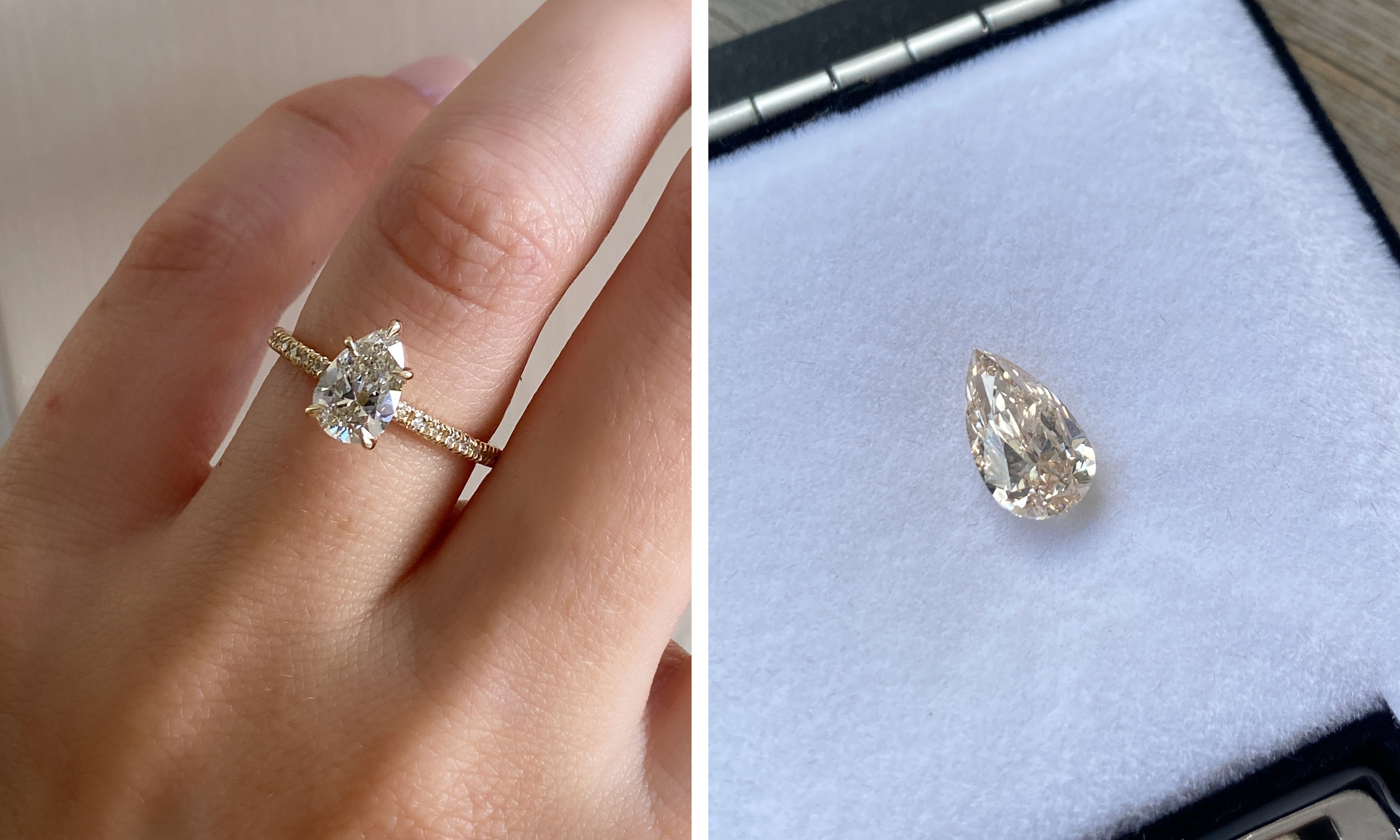
Above: A 1.02ct Pear Ceremonial Solitaire with a pavé band (left) and a 1.83ct Pear Champagne Diamond (right)
Carat
Carat refers to the weight of the diamond whereas a diamond's dimensions refer specifically to the size. Like other elongated diamond shapes, pears tend to appear slightly larger on the finger when compared to round diamonds of the same carat weight, making pear cut diamonds a great option for those looking for a classic design that appears larger than it's carat weight. In saying this carat weight does come down to personal preference and is influenced by a number of factors including the size of the recipient's hand.
Setting
The exposed point of a pear diamond is it’s most vulnerable aspect. The setting style for your pear should always protect this - be it with a claw, or in a bezel setting.
Pear diamond solitaire engagement rings can also be custom set in an east-west orientation. This truly highlights the unique outline of a pear and is a bold choice for the modern woman.
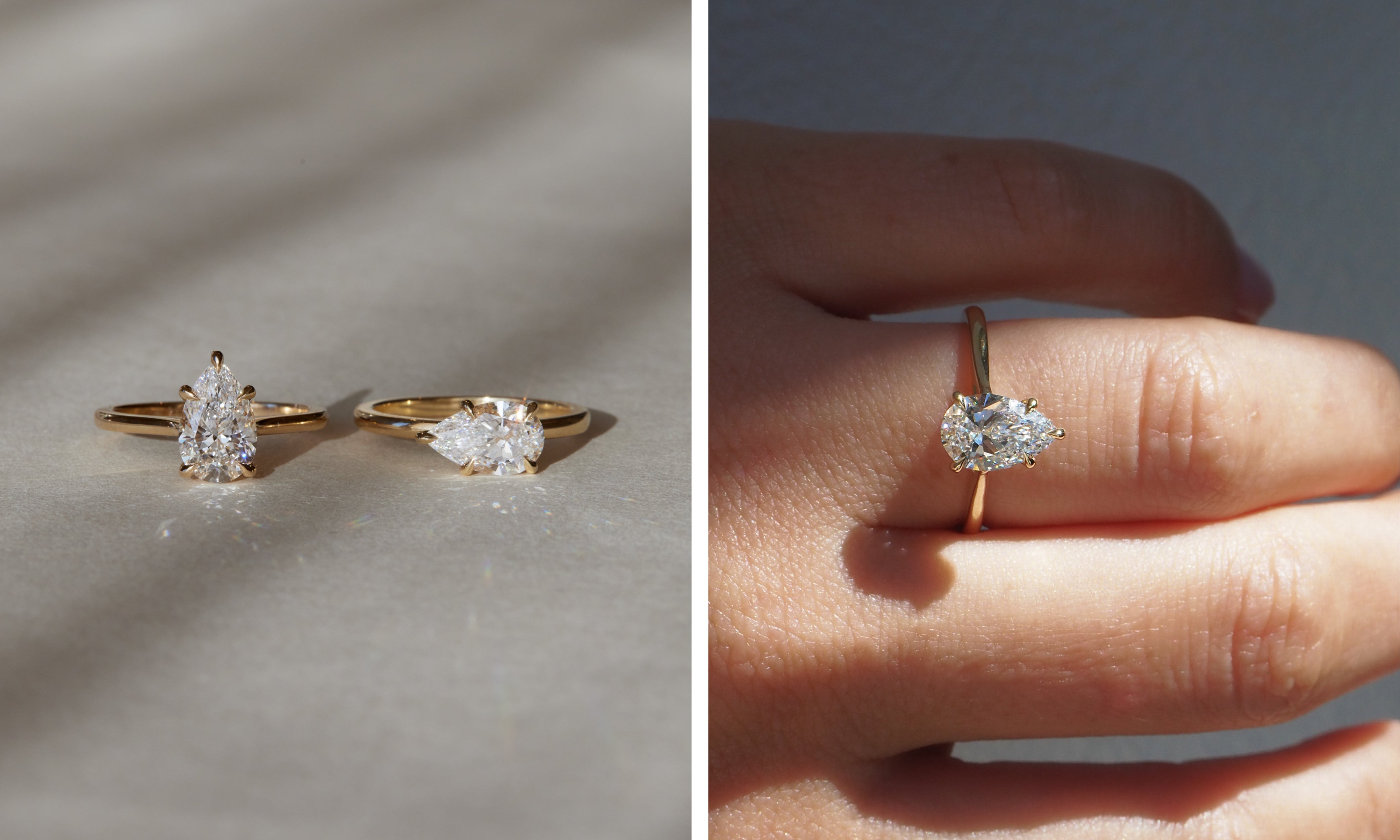
Above: A traditionally set 1.50ct Pear Classic Solitaire (left image, left style) next to an east-west set 1.27ct Ceremonial Solitaire (left image, right style). A 1.25ct Pear Classic Solitaire (right image)
Choosing the perfect pear diamond.
When it comes to choosing the perfect pear diamond, LOUISE JEAN suggest relying on two main aspects. Firstly trust your consultant, and rely on the guidance of our expert consulting team to understand the complexities of each diamond. Together as a team, carefully consider the proportions, visual beauty and value of each diamond.
Once you have your trusted consultant, it's best to let your heart guide you from the beginning as you will have priorities that are unique to you. All in all, remember the overall appearance is more important than the specific proportions and you should come across a diamond you will admire for the rest of your life.
Build your own Pear Diamond Ring using our Bespoke Ring Builder.
